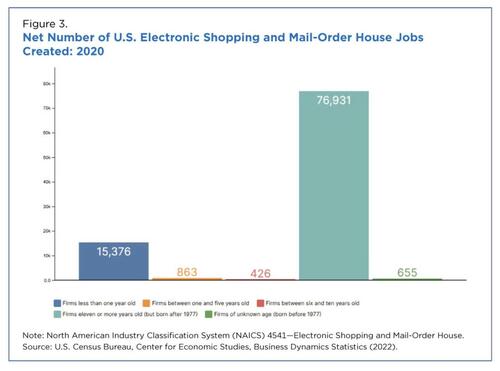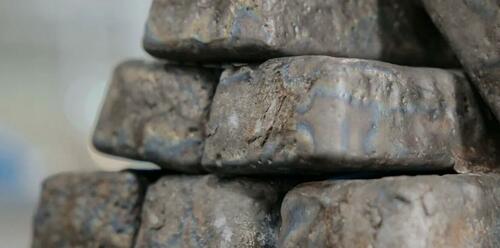Rare Earths Rally After Department Of Defense Sets A Price Floor
By Metal Miner
The global rare earth metals market has seen a whirlwind of developments in the past few weeks, sending ripples through both supply chains and pricing. A series of U.S. and Chinese policy moves, from Washington’s unprecedented price support for rare earth magnets to Beijing’s export curbs, continue to reshape this critical sector.
U.S. Sets New Rare Earth Price Floor to Challenge China’s Dominance
The United States recently escalated its efforts to reduce dependence on China by directly intervening in pricing. In mid-July, the Department of Defense struck a multi-billion-dollar deal with MP Materials, America’s sole rare earth miner, guaranteeing a minimum price of $110 per kilogram for neodymium-praseodymium (NdPr) oxide.
That price floor, which is nearly double the current China-based market rate of around $60/kg, aims to incentivize domestic production of the super-strong magnets used in EV motors, wind turbines, and defense systems.
Officials and analysts describe the move as a game-changer for the industry. By establishing a higher Western pricing benchmark, the U.S. hopes to offset China’s long-standing tactic of undercutting prices to maintain its dominance. “This benchmark is now a new center of gravity in the industry that will pull prices up,” notes Adamas Intelligence, adding that it could bolster non-Chinese producers globally.
News of the U.S. price support immediately lifted Australian rare earth mining stocks. For instance, Lynas Corp jumped 20% to a three-year high on expectations that non-Chinese suppliers would benefit from a more level playing field. Market watchers say the initiative signals a strong push for North American supply chain independence and may spur similar policy support in allied countries.
China’s Export Curbs Squeeze Supply Chains
Meanwhile, China’s export policies have injected uncertainty into the rare earth market. Back in April, Beijing added seven rare earth metals, including heavy elements like dysprosium, terbium and samarium, to its export control list. A tentative thaw emerged in late July as trade negotiators worked to ease the standoff.
Under an earlier tariff truce, China agreed to begin removing its new rare earth export restrictions. In practice, Chinese authorities have started issuing export licenses to select U.S. customers, resulting in a sharp rebound of magnet shipments in June and July.
U.S. Trade Representative officials say progress is being made, but caution that the process is only “about halfway” toward fully restoring normal trade flows. Beijing insists its export controls are “non-discriminatory” and has signaled its willingness for talks. However, it also wields these measures as leverage, a reminder of rare earth metals’ role as a strategic pawn in the broader U.S.-China tech rivalry.
For procurement executives, the situation remains fluid. Contingency plans (such as qualifying alternative suppliers outside China or increasing inventories) are back on the agenda for manufacturing firms. To stay ahead of such geopolitical risks, many organizations are leveraging market intelligence tools like MetalMiner Select.
Global Supply Chain Shifts and New Mining Developments
The recent volatility around rare earth metals is spurring a broader realignment of supply chains as U.S. allies and major consumers collaborate to dilute China’s dominance. Notably, Japan and the EU announced plans for joint rare earth procurement in a public-private partnership aimed at securing a more stable supply.
These initiatives underscore a clear global trend of diversification where governments and companies alike, from Australia to North America, are investing in mining, processing and recycling capacity.
Mining news over the past month reflects this momentum. Australia’s Lynas Rare Earths, the largest producer outside China, reported record quarterly revenue in late July thanks to higher rare earth prices and strong demand. Lynas’s CEO noted that the market has become “more vibrant and buoyant” since China’s export curbs, with the company’s average selling price jumping to its highest level in three years.
To capitalize on its growth, Lynas is ramping up output and expanding downstream. The firm recently inked a deal with a South Korean company to build a 3,000-ton-per-year magnet manufacturing plant in Malaysia. The move will make Lynas the first commercial producer of certain heavy rare earth oxides outside China.
Prices Rise on Tight Supply and Robust Demand
Rare earth prices have climbed significantly in recent weeks, driven by a perfect storm of constrained supply and revived demand. In July alone, the benchmark China price for NdPr alloy jumped from roughly ¥545,000/mt at the start of the month to ¥635,000 by July 28.
Multiple factors are fueling this rally. On the supply side, China’s export restrictions and related bottlenecks have tightened material availability for overseas buyers. Industry analysts note that U.S. ore shipments to China effectively dropped to zero after MP Materials stopped exporting concentrate, removing over 300 metric tons of NdPr oxide equivalent per month from the global supply pool.
Meanwhile, Myanmar, a major source of heavy rare earth feedstock for China, announced plans to ban rare earth metals mining by the end of 2025, raising concerns about future supply. This comes as rumors of output cuts at a large Chinese producer have further stoked scarcity fears. On the demand side, manufacturers are ramping up purchases. With fresh clarity emerging around China’s magnet export rules as of July, many magnet makers have rushed to secure orders for Q3 and Q4 delivery, anticipating possible delays.
Short-Term Outlook for Rare Earth Metals
Looking ahead to the next few months, the rare earths market appears poised to remain firm. However, this does not mean it is free of risks. Most analysts agree that prices will stay elevated through the end of the third quarter. The demand pipeline is particularly robust, with electric vehicle makers, wind turbine manufacturers and electronics producers all planning for a strong finish to the year. This could mean continued short-term appetite for rare earth magnets.
This seasonal strength, combined with buyers’ ongoing restocking, provides a floor under prices in the near term. Additionally, the U.S. government’s price-support deal effectively establishes $110/kg as a new minimum benchmark for NdPr. Even if Chinese spot prices dip slightly, the incentive for Western producers to hold out for higher prices is now in place.
Potential Challenges
There are also a few wildcards that could swing the outlook, the trajectory of U.S.-China negotiations being chief among them. If diplomatic talks yield concrete resolutions, such as China fully lifting its export licensing requirements for rare earth metals, the rush to secure supply could ease, potentially taking some heat out of prices.
For metal procurement executives, this volatile environment calls for agility and informed strategy. In the short run, many are adopting a hedged approach: committing to some volumes now to avoid future price spikes, while holding contingency budgets in case prices pull back. Engaging alternate suppliers outside China, where possible, is another play—one that could gain traction as projects like the new Malaysian magnet plant or U.S. processing facilities come online.
Rare Earths MMI: Noteworthy Price Shifts
See why technical analysis is a superior forecasting methodology over fundamental analysis and why it matters for your metal buys.
Yttria prices dropped by 5.59% to $6,547.97 per metric ton.
Neodymium oxide prices surged by 16.36% to $73,418.65 per metric ton.
Praseodymium oxide prices rose by 12.7% to $73,868.14 per metric ton
Lastly, terbium oxide prices fell 2.91% to $984.56 per kilogram.
Tyler Durden
Thu, 08/14/2025 – 06:30












